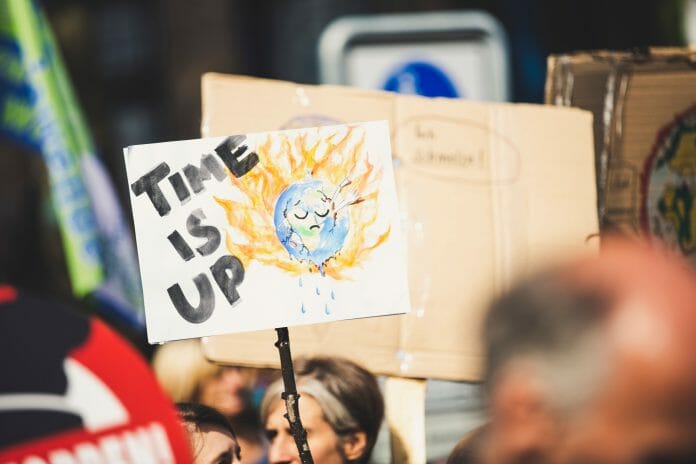The COP (Conference of the Parties) plays a pivotal role in the World’s struggle against climate- a change that threatens to negatively alter the way the world will be, in the near future; and a future that looks bleak like a dark & scary sci-fi! In line with the 5-year review plan, delayed a year by the pandemic, the COP26 was a chance for countries to review and update members ’plans regarding reducing carbon emissions.
That it took over 30,000 delegates, 2 weeks of negotiations, and very little concern was shown for the vulnerable communities globally and developing nations is a disappointment. The behaviour of developed nations in not keeping their promises of climate financing is another one.
Since the primary goals are intertwined, a lack of progress in one effectively limits the achievement of the others. The UN chief stated that in order to lower emissions in developing countries, there is a dire need for coalitions consisting of developed economies, financial institutions, and parties with technological know-how. It is a cumulative global self-interest in the self-preservation of humanity!
The commitments made in Paris 2015 did not come close to limiting global warming to 1.5 degrees Celsius. Here are some of the key achievements of COP26.
• Reduce Carbon Dioxide Emissions to Half by 2030 151 countries agreed to slash emissions, keeping in line with the long-term goal of limiting temperature rise to 1.5 degrees Celsius by the end of this decade.
• Reach Net-Zero emissions by 2050 The amount of greenhouse gases released and removed need to be equalized. India’s contribution has been lauded, and the country has pledged to reach the net-zero goal by 2070 as part of its five elixirs for climate change.
• Mobilize $100 Billion a Year to Aid Climate Change Efforts in Developing Countries OECD efforts unveiled that developed countries failed to meet the goals set for 2020, so this goal was reiterated with a stipulation that developed countries must report their progress on said issue. Developed countries agreed to double the funding adaptation by 2025, which would amount to an estimated $40 billion.
• Halt and Reverse Deforestation by 2030 More than 120 countries, making up 90% of the world’s forests, pledged to reverse deforestation in light of its adverse effects on the environment.
• Reduce Coal Consumption
Major coal users, including Poland, Chile and Vietnam, decided to shift away from coal use, one of the primary generators of CO2 emissions.
• Reduce Methane Emissions by 30% by 2030
100 countries agreed to sign the Global Methane Pledge. India, Russia and China refrained from signing this pact despite their contributions as the top 3 methane emitting nations.
• Private Sector Aligns Goals Set Out in Paris Agreement 2015
Around 500 global financial services firms agreed to align $130 trillion, around 40% of the world’s financial assets, with goals like achieving the 1.5 degrees Celsius temperature change.
• End Sales of Internal Combustion Engines by 2035
More than 100 countries signed the Glasgow Declaration on Zero-Emission Cars and Vans to focus on sales of zero-emission vehicles as part of the green transport agenda.
COP26 Outcomes & Companies’ ESG initiatives
Now more than ever, it has become paramount for businesses to consider their sustainability journey. It won’t be wrong to say that COP 26 placed a greater onus and trust in business as compared to states to fix the climate crisis. COP26 outcomes will impact businesses:
• New carbon market rules will drive investment decisions
• Reiteration of 1.5 °C target pressures companies for better Net-Zero plans
• Greater scrutiny of fossil fuels could impact industry decisions, especially social-licence pressure from local communities
More stringent pollution-control regulations are expected, especially for companies in the chemicals transport, energy and farming industries. Businesses are also likely to incur a risk to their credit rating, fund-raising ability, as well as lower their ability to attract and sustain talent. The ESG programs of enterprises will likely be the deciding factor on which investors will go forward with or reserve their funding.
• Businesses need to reassess their impact on natural resources, greenhouse emissions, and waste generation in the production, use, delivery, and end-of-life recovery of goods and services.
• Businesses can work towards improving their sustainability policy. With an increased focus on fossil fuel consumption, consumers and workers alike are becoming more aware of their company’s carbon footprint.
• Companies can use the increasing prices of carbon emissions to their advantage by creating and innovating more environment-friendly products that generate carbon-credits.
• In light of the stress placed on the 1.5 C degree goal in COP 26, companies can even look towards alternative building materials.
Building an ESG strategy is no longer just feel-good or beneficial. Rather, it’s imperative for companies and governments to transition towards a low-carbon and sustainable economy. Here are a few key considerations for companies after COP 26:
• Create sustainable value for stakeholders to attract investors
• Initiate environmental friendly campaigns to boost reputation and potentially expand into new markets with the new goals set forth (for example, green transport agenda)
• Mitigate regulatory compliance risk by incorporating the agenda of COP 26 in the company’s ESG program
What’s more important for companies to understand is that ESG is no longer a niche but a bar they need to compete with. Since COP26, the involvement of businesses in the quest for a safer planet has brought companies under scrutiny. ESG is for real, and not just fancy presentations and jargons to use in Corporate presentations anymore!
ESG #ClimateChange #COP26 #SustainabilityGoals #NetZero #GreenFinance #GreenShaming
DevelopedNations #DevelopingNations #FossilFuel #RenewableEnergy #Inclusiveness
Authors : Subrato Basu – Advisor to Fortune 500 & New Era Business Transformation Coach
& Srinath Sridharan – ESG Transformation Advisor & CXO coach









